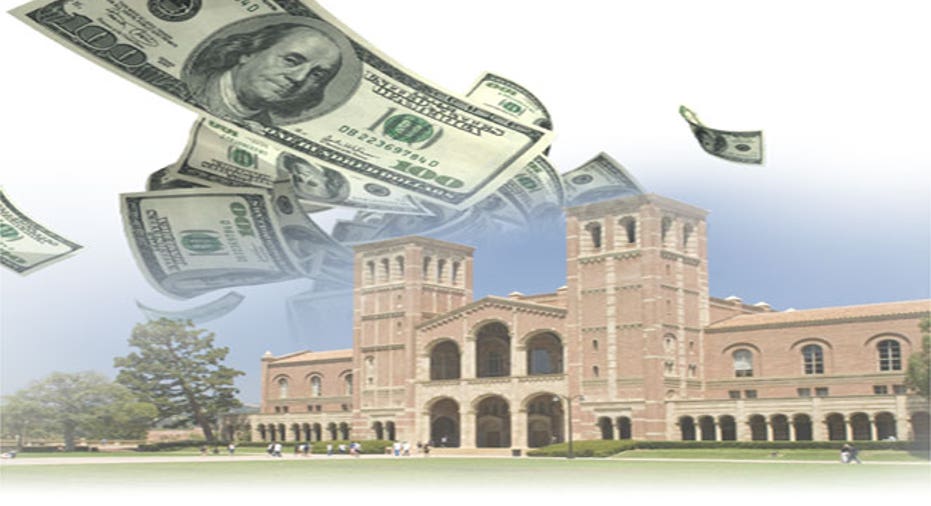Student Loan Tips for the Class of 2013

As many federal loans for the Class of 2013 enter the final stretch of the six-month grace period before entering repayment, a recent Fidelity study shows that nearly half of recent grads are shocked by the amount of debt they have accumulated.
The study reports that 70% of the 2013 college graduation class had an average of $35,200 in debt including federal, state and private loans, as well as debt owed to family and accumulated through credit cards.
Once the grace period ends, many grads struggle to get debt repayment started on the right foot, says Jordan Goldman, education expert and founder of Unigo.com.
“Right now, 57% of undergrads receive federal aid and 22% to 25% of them are late for their first payment,” he says. “If you don’t put in place a system where you’re paying it off every single month from the very start, it really messes up your credit score down the line with all of this debt and that’s really when it becomes uncontrollable.”
In previous years, the accrued interest on subsidized Stafford loans was paid by the government while borrowers were still in school and during their grace period.
Now like unsubsidized loan borrowers, recent grads are responsible for paying the interest on subsidized loans immediately upon graduation or withdrawal from school, according to student loan expert, Heather Jarvis.
“They may begin with a balance that is higher than what they had anticipated because it will include interest that has begun to accrue as soon as they borrow those particular loans,” she says.
Here are three steps experts say recent grads should take to get a better handle on student loan debt:
Step 1: Establish all Loan Details
Grads should start by taking inventory of their loans, including: how much debt they have, who their lenders are, the loan terms, and when repayment begins.
“Students need to from the very start put in place a plan that’s going to allow them to pay this off systematically--they should look at all of their loans and figure out which of their loans have the highest interest rate and they can pay that one off first,” says Goldman.
Students with private loans can take inventory of their loan terms by looking at a copy of their credit report, but understand there are different terms and repayment options than federal loans, warns Jarvis.
“They may have variable interest rates that are likely to rise over time, some of those variable interest rates will have no cap, and aren’t likely to offer an income based repayment plan of any kind,” she says. “Federal loans will be more flexible over time and for most people, more affordable, so targeting that private loan debt for payment also can be a smart strategy.”
Step 2: Understand Repayment Options
Depending on their financial situation, grads have a variety of federal loan repayment options to choose from.
“Understanding those repayment plans, whether it’s a standard or extended or some sort of graduated plan, is critical to figure out what you might qualify for,” says JJ Montanaro, USAA certified financial planner practitioner. “It’s not a one size fits all in terms of repayment options--they need to find the one that fits their situation the best.”
For eligible borrowers experiencing financial hardship, the Income-Based Repayment Plan and the new Pay As You Earn Plan offer maximum monthly payments capped at a percentage of the borrower’s discretionary income (15% for IBR, 10% for Pay As You Earn).
While borrowers under both plans will pay more over the life of their loan than under the 10-year standard plan, income-driven options can often be a better choice than requesting a temporary forbearance or postponing payments altogether, notes Jarvis.
“That is an option for federal loans but it’s not always the best way to control the costs of your loans because interest continues to accrue and if you’re enrolled in one of these income-driven plans, there are other benefits that are associated with that including affordable payments and for some people, the potential of some loan cancellation down the line.”
Step 3: Strive to Pay on Time
It’s vital that grads pay on time, and signing up for automatic loan payments can minimize the chance of missing important payments while juggling monthly bills for the first time, says Phillip Quintana, senior vice president at Capital One Bank.
“Many times, lenders will knock 0.25% or so off your interest rate if you sign up for automatic payments, which can save hundreds of dollars over the course of your loan. Some lenders will also lower your interest rate if you make the first twelve months of loan payments - easy to do when the loans are paid automatically each month.”
Although it may take years to become debt free, grads should note that student loan debt is considered an installment loan and can make for a stronger credit history as long as they are consistent with on-time payments, says Goldman.
“It’s going to help ensure that your credit history is a strong one, that you have a solid history of monthly payments on the dot and that’s a really important factor,” he says. “If you’re going to have student loans and you’re going to have to repay them, you might as well get something out of it and a positive credit history is a great thing to target there.”